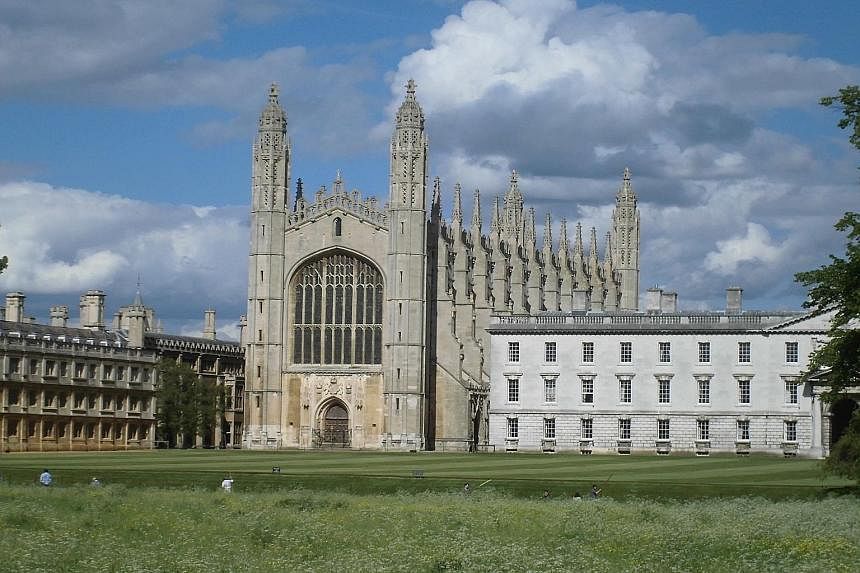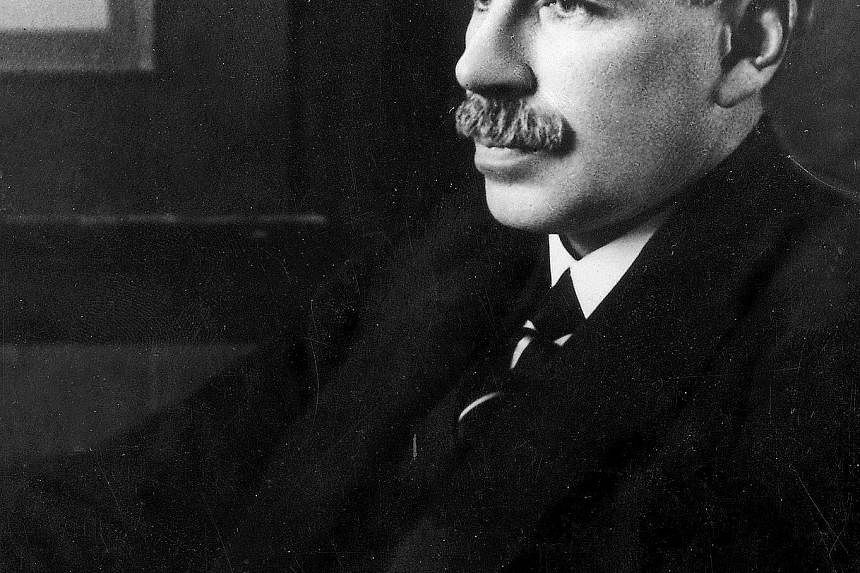Before those great stock market players Benjamin Graham, Warren Buffett and George Soros became media superstars, there was one investor who set the template for share-picking genius - British economist John Maynard Keynes.
His name is most revered, of course, for his economic theories that were so influential they have gained renewed relevance in the past few years.
Keynes' belief in the power of a big-spending stimulus programme is behind the move by central banks such as the United States Federal Reserve and Bank of Japan to put the printing presses into over-drive, pumping in billions of dollars of new money to kick-start moribund economies.
But less well-known were the economist's astonishing stock-picking skills which made his alma mater, King's College, where he was the bursar until he died in 1946, one of the wealthiest establishments at Cambridge University in Britain.
As I sat in King's College Chapel last month listening to the evensong service by its world-famous choir and enjoying the fading sunlight through its stained glass windows, I mused over the many stories I had read about Keynes as an investor, like how he used to spend his mornings in bed poring over the newspapers for stock calls.
I am no economist - I studied physics in my youth and I must confess that I found his key work, The General Theory of Employment, Interest and Money, well over my head when I tackled it.
However, as an investor, I feel an instant affinity with the man, recognising in his fallibilities the lack of financial security we have always felt when we invest our own nest-eggs.
Keynes' life as an investor is delightfully reproduced in a book, Keynes's Way to Wealth, by US financial journalist John Wasik. The book's many quotes from the great economist alone make it a fine read.
As a young man, Keynes was a speculator, dabbling in currency and commodity futures, brashly confident that his grasp of ma-cro-economics would give him a big edge over other investors.
At one stage, he was said to have speculated so much in wheat futures that he could fill up the entire King's College Chapel with grain.
But despite his financial acumen and extensive network of contacts, he failed to anticipate the great stock market crash on Wall Street in 1929. That lost him his shirt, forcing his father and a wealthy friend to bail him out.
Any ordinary person would have taken that as a warning, swearing off risky investments forever and sticking to safer assets such as bonds instead.
Instead, Keynes morphed into a "value" investor, refocusing his attention on individual companies and asking questions like, "What kind of dividends did they pay? Were they consistent? What was management like? Did he understand the company's business model?"
These are familiar questions now asked by the value school of investing championed by legendary investor Warren Buffett. But when Keynes started investing his college's money, British institutions had shunned equities in favour of bonds.
Keynes wrote: "As time goes on, I get more and more convinced that the right method in investment is to put large sums into enterprises which one thinks one knows something about and in the management of which one thoroughly believes."
Even the great stock market plunges between 1936 and 1938 failed to dampen his ardour as he held fast to his policy of holding big stock positions long-term in companies that paid good dividends. This was despite finding himself losing another fortune when his portfolio plunged 62 per cent in value.
But his focus on staying the course and maintaining his discipline reaped a handsome profit. Between 1924 and his death in 1946, the Chest fund which he managed for King's College had grown from £30,000 to £380,000. Adjusted for inflation, the sum would be worth considerably more today.
He was able to make such a remarkable return despite the turbulence whipped up by the Great Depression and World War II.
The gains made by several of the stocks he picked - British American Tobacco, General Electric and Shell - would have been even more impressive if they had been held until today.
For me, what is more important is the advice he has to offer investors caught in a stock market crash when prices are plunging.
He wrote: "I do not believe that selling at very low prices is a remedy for having failed to sell at high ones... I feel no shame at being found owning a share when the bottom of the market comes.
"I do not think it is the business, far less the duty, of an institutional or any other serious investor to be constantly considered on whether he should cut and run on a falling market... An investor is aiming, or should be aiming, primarily at long-period results and should be solely judged by these."
But Keynes did not live solely for his economic theories and investments. Instead, he was a very active lecturer, giving talks regularly on the radio while also serving as a patron of the arts with a personal interest in opera and ballet.
He advised the British government in various capacities, helping to lay the foundations for the International Monetary Fund and World Bank after World War II.
He also had a great eye for art and manuscripts, even owning several pieces by Pablo Picasso, who numbered among his friends. His interests extended to physics, where he owned an original manuscript of the Principia Mathematica and other papers written by 17th-century physicist Issac Newton.
Perhaps the greatest lesson he has to offer is that the object of investing is to ensure that we have enough to live by and that we should not become obsessed with making money: He used the wealth he created to buy books, take vacations, fund art activities and donate to his college.
Like Keynes, what we should do with our investments is to have a sound plan that meets our goals and monitor it occasionally. After that, we should just enjoy ourselves and live our lives to the fullest.



